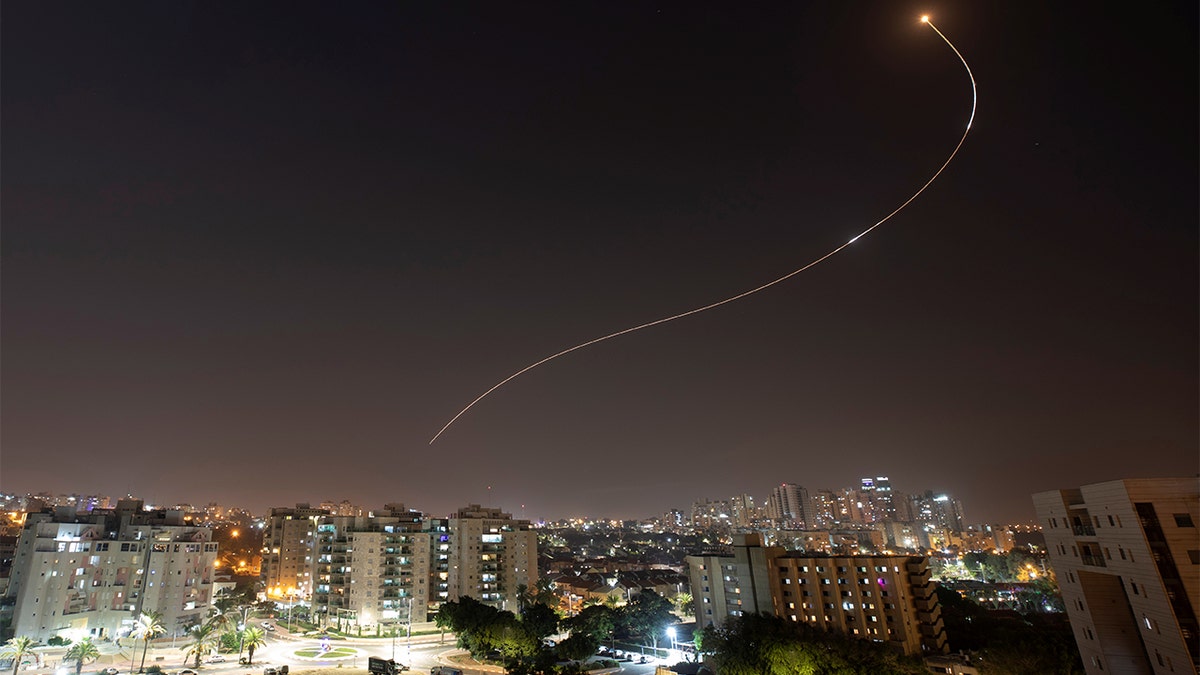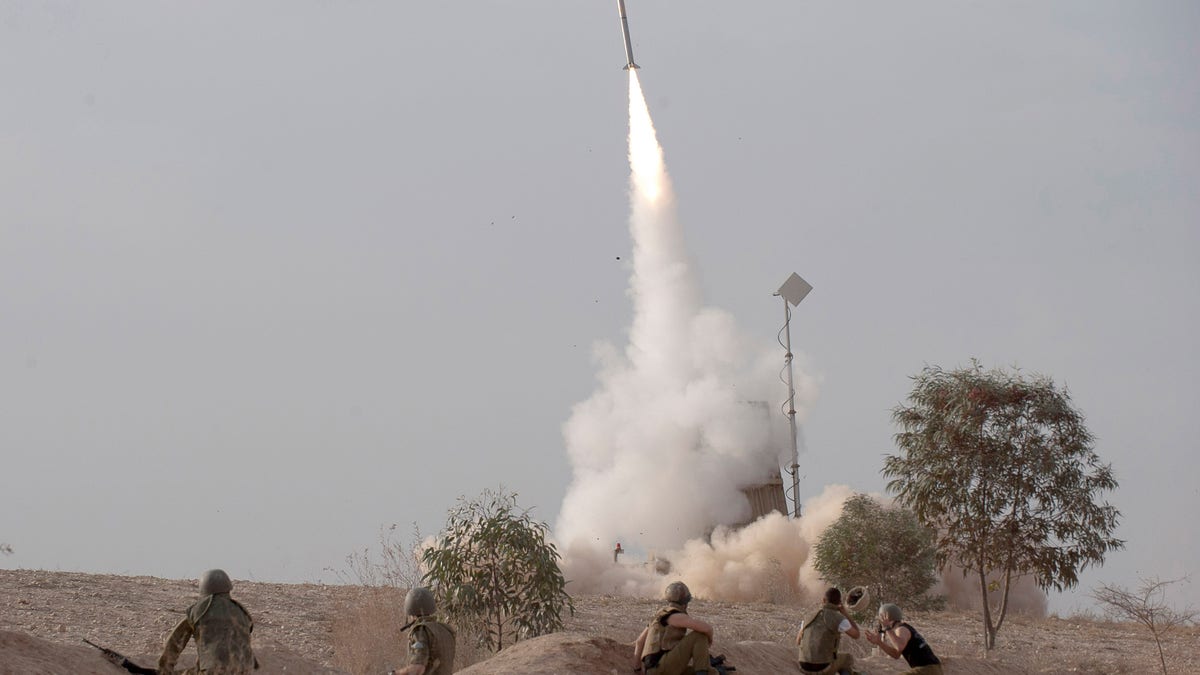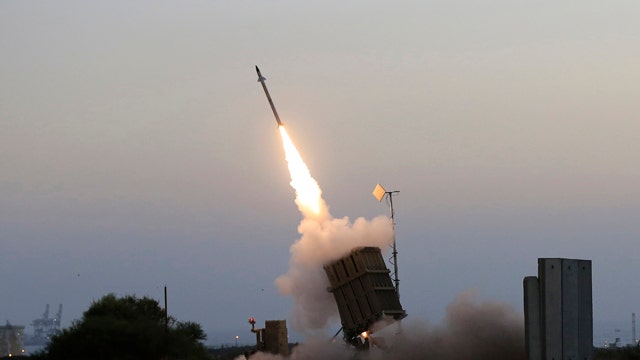In a quiet ceremony on Wednesday, the U.S. received its first of two pre-ordered Iron Dome batteries from Israel, with Defense Minister Benny Gantz hailing the moment “as further proof that the defense alliance [between the U.S. and Israel] is based on common values and interests, which are stronger than ever.”
However, the Pentagon is reported not to be moving ahead with any further purchases of the eminent air defense system.
The U.S. Army – which entered into the buying agreement last August – has halted future deals as a result of Israel declining to hand over the elemental source code, according to the Times of Israel. A representative for the missile’s manufacturer, Rafael Advanced Systems, said the company was in ongoing discussions regarding the matter.

An Iron Dome anti-missile system fires interception missiles as rockets are launched from Gaza toward Israel, as seen from the city of Ashkelon, Israel, Nov. 13, 2019. (REUTERS/ Amir Cohen)
But the head of U.S. Army Futures Command, Gen. Mike Murray, also hinted that the time it took to receive the shipment played a part in the freezing of additional systems and more extensive incorporation of the Dome into the Pentagon’s arsenal.
“It took us longer to acquire those [first] two batteries than we would have liked,” Murray told the House Armed Service Tactical Air and Land Forces Subcommittee in March. “We believe we cannot integrate them into our air defense system based on some interoperability challenges, some cyber challenges, and some other challenges.”
The deal inked more than a year ago, estimated to be worth over $1 billion, entailed the U.S. Army purchasing two off-the-shelf batteries, along with 12 launchers, two sensors, two battlement management centers and 240 interceptors, the Jerusalem Post noted.

The Iron Dome air defense system at the Israeli side of the border between Israel and Lebanon in August 2019. (Reuters)
It wasn’t clear what the time frame on the delivery was intended to be, other than “near future,” the Israeli Defense Ministry stated at the time.
While the U.S. Army possesses a terminal high-altitude area defense antiballistic missile defense system created to intercept and destroy short-, medium- and intermediate-range ballistic missiles in their beginning phase, the Department of Defense is limited on its short-range air defense solutions – which is precisely what the Iron Dome system is designed to do.
FOUR ROCKETS FIRED INTO ISRAEL FROM SYRIA INTERCEPTED BY IRON DOME
First developed in Israel and operational for almost a decade -- and advanced by U.S. aid -- the system is considered to be the lowest tier of Israel’s multileveled air defense depository. With the capacity to carry some 22 pounds of explosives and the prowess to intercept an incoming projectile up to 43 miles away, it is deemed critical in protecting ground troops and civilians against short-range projectiles and related aerial threats.
Furthermore, the technology can detect when the rocket will crash in an open space – thus rendering it unnecessary to intercept – and when it is headed to hit a residential or populated area.

An Israeli Iron Dome missile is launched near the city of Be'er Sheva, southern Israel, to intercept a rocket fired from Gaza Saturday, Nov. 17, 2012. Israel bombarded the Hamas-ruled Gaza Strip with nearly 200 airstrikes early Saturday, the military said, widening a blistering assault on Gaza rocket operations to include the prime minister's headquarters, a police compound and a vast network of smuggling tunnels. (AP Photo/Ahikam Seri)
The Iron Dome gained fast global notoriety in the 2014 “Operation Protective Edge,” knocking out 735 rockets launched from Gaza -- determined as threatening -- amid the 50-day conflict. The Dome then was considered to have a 90% success rate with its interceptions.
CLICK HERE TO GET THE FOX NEWS APP
And despite the apparent stoppage to buy more, the dispatch this week has been touted as a strengthening of U.S-Israel ties.
“I am proud that this advanced system will also protect U.S. Army troops,” Gantz said in a statement. “This is an extraordinary achievement for both the Ministry of Defense and for Israel’s excellent defense industries.”

